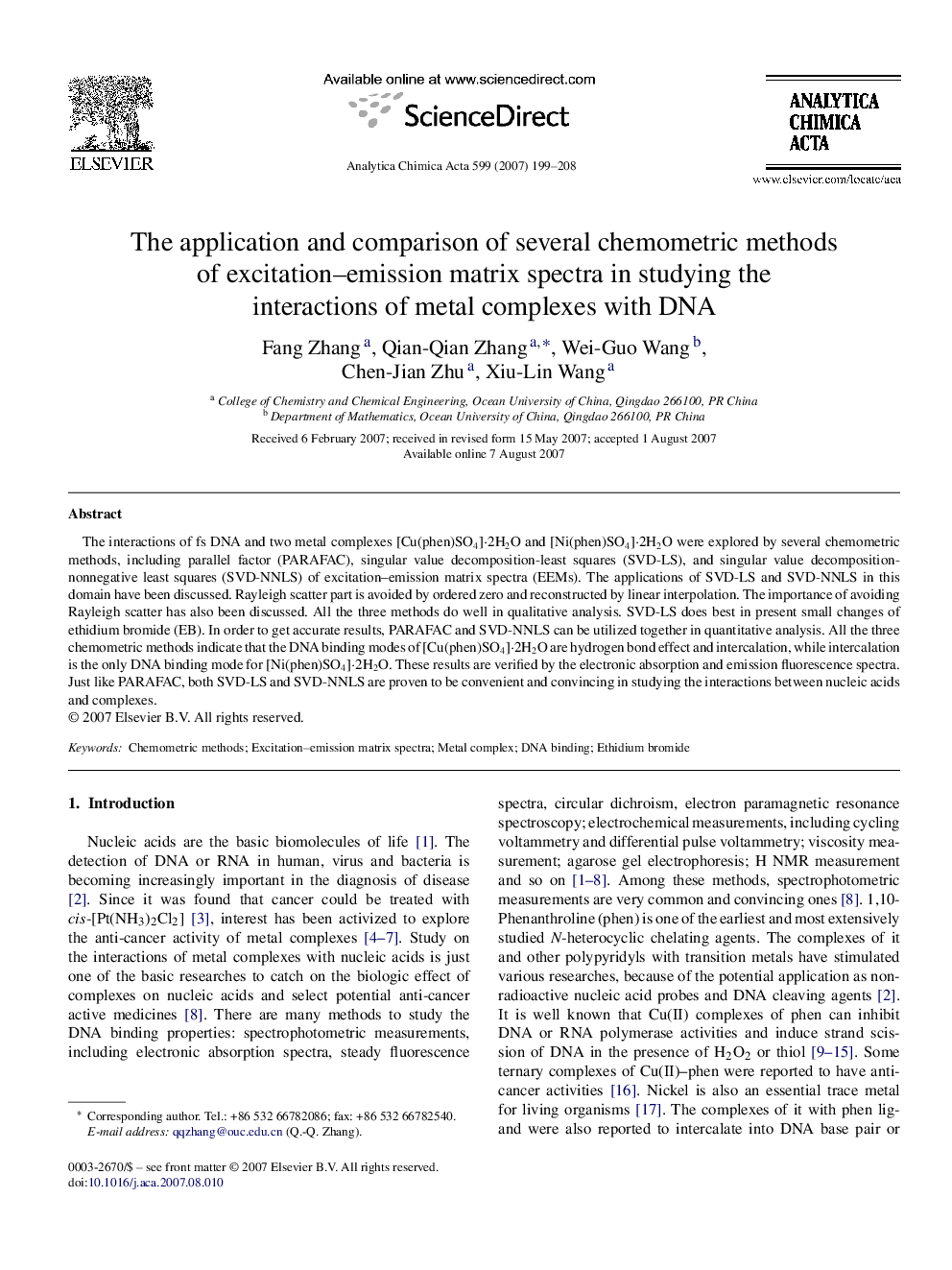| Article ID | Journal | Published Year | Pages | File Type |
|---|---|---|---|---|
| 1169701 | Analytica Chimica Acta | 2007 | 10 Pages |
The interactions of fs DNA and two metal complexes [Cu(phen)SO4]·2H2O and [Ni(phen)SO4]·2H2O were explored by several chemometric methods, including parallel factor (PARAFAC), singular value decomposition-least squares (SVD-LS), and singular value decomposition-nonnegative least squares (SVD-NNLS) of excitation–emission matrix spectra (EEMs). The applications of SVD-LS and SVD-NNLS in this domain have been discussed. Rayleigh scatter part is avoided by ordered zero and reconstructed by linear interpolation. The importance of avoiding Rayleigh scatter has also been discussed. All the three methods do well in qualitative analysis. SVD-LS does best in present small changes of ethidium bromide (EB). In order to get accurate results, PARAFAC and SVD-NNLS can be utilized together in quantitative analysis. All the three chemometric methods indicate that the DNA binding modes of [Cu(phen)SO4]·2H2O are hydrogen bond effect and intercalation, while intercalation is the only DNA binding mode for [Ni(phen)SO4]·2H2O. These results are verified by the electronic absorption and emission fluorescence spectra. Just like PARAFAC, both SVD-LS and SVD-NNLS are proven to be convenient and convincing in studying the interactions between nucleic acids and complexes.
